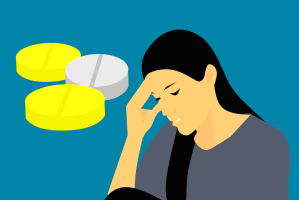Is Acetaminophen/Paracetamol Really “Ineffective”?
A recent headline says: “Paracetamol ineffective for most pain conditions“. So what’s the story when it comes to headache?

Paracetamol, also called acetaminophen, is still often known by the common brand name Tylenol. Along with aspirin and ibuprofen, it has been a well-known go-to when it comes to over-the-counter drugs for pain management.
The study (link below) was actually a review of 36 systematic reviews published in medical journals. In those reviews, 44 pain conditions were treated with acetaminophen/paracetamol.
Now, things start to get complicated once you drill down that far. Researchers had to watch for bias or errors in studies, or studies that weren’t relevant for whatever reason. And sometimes you end up with a small amount of information for certain conditions. But you do end up with a good summary of what we know, even if what we know is somewhat limited in certain cases. Make sense? 🙂
The study was also mainly focused on whether or not there was “immediate” pain relief, although a couple of conditions did focus on ongoing treatment (osteoarthritis pain and rheumatoid arthritis).
The good news for headache sufferers is that Tylenol for tension-type headache actually turned out to be one of the more successful stories – although, not that successful. Only two conditions made it to “high quality” evidence, but tension-type headache was listed under “moderate quality evidence of efficacy”. In other words, there is fair evidence that acetaminophen/paracetamol will provide some pain relief for that headache. Not exactly a miracle-cure, according to these researchers.
But notice that I only mentioned tension-type headache. What other headaches made the list?
Quite a few – but acetaminophen/paracetamol only had “low quality evidence” for these headaches:
- Acute Migraine
- Cold related headache
There was also low-quality evidence that it wasn’t effective for:
- Migraine in children/adolescents
Of course there are many other headache types, but generally the evidence wasn’t available either way.
In the end, this study mostly tells us that surprisingly there are very few good quality studies of acetaminophen for headache conditions, and that most of the studies out there simply aren’t all that impressive, with the possible exception of tension-type headache. For other conditions, pain relief after surgery did not fare well, and the condition that really did not seem to be helped at all was lower back pain.
There was good news for craniotomy – surgeries in which the skull is opened up, and knee or hip osteoarthritis. However, researchers admitted that “the effect sizes were very small”.
The other good news is that the number of adverse effects was small – but again researchers noted that there wasn’t very much research to be sure.
It might surprise us that such a ubiquitous top-selling pain killer has so little research behind it. Of course, it’s a challenge to research a “pain killer” for every individual condition. If it kills pain, doesn’t it just pain?
Apparently not. And that’s another interesting point in this study. How well it works, and even adverse effects, depend very much on the condition.
—-> From what we know, if you take acetaminophen/paracetamol very occasionally for headache, and it works for you, no worries. But if headache is a significant disruption in your life, say every month or every week, you should be talking to a doctor to find better options. If that pain killer you’re using really isn’t making your life that much better, it’s time to realize that there are many more options out there.
To read the study, published in the Medical Journal of Australia, just click here: The efficacy and safety of paracetamol for pain relief: an overview of systematic reviews
